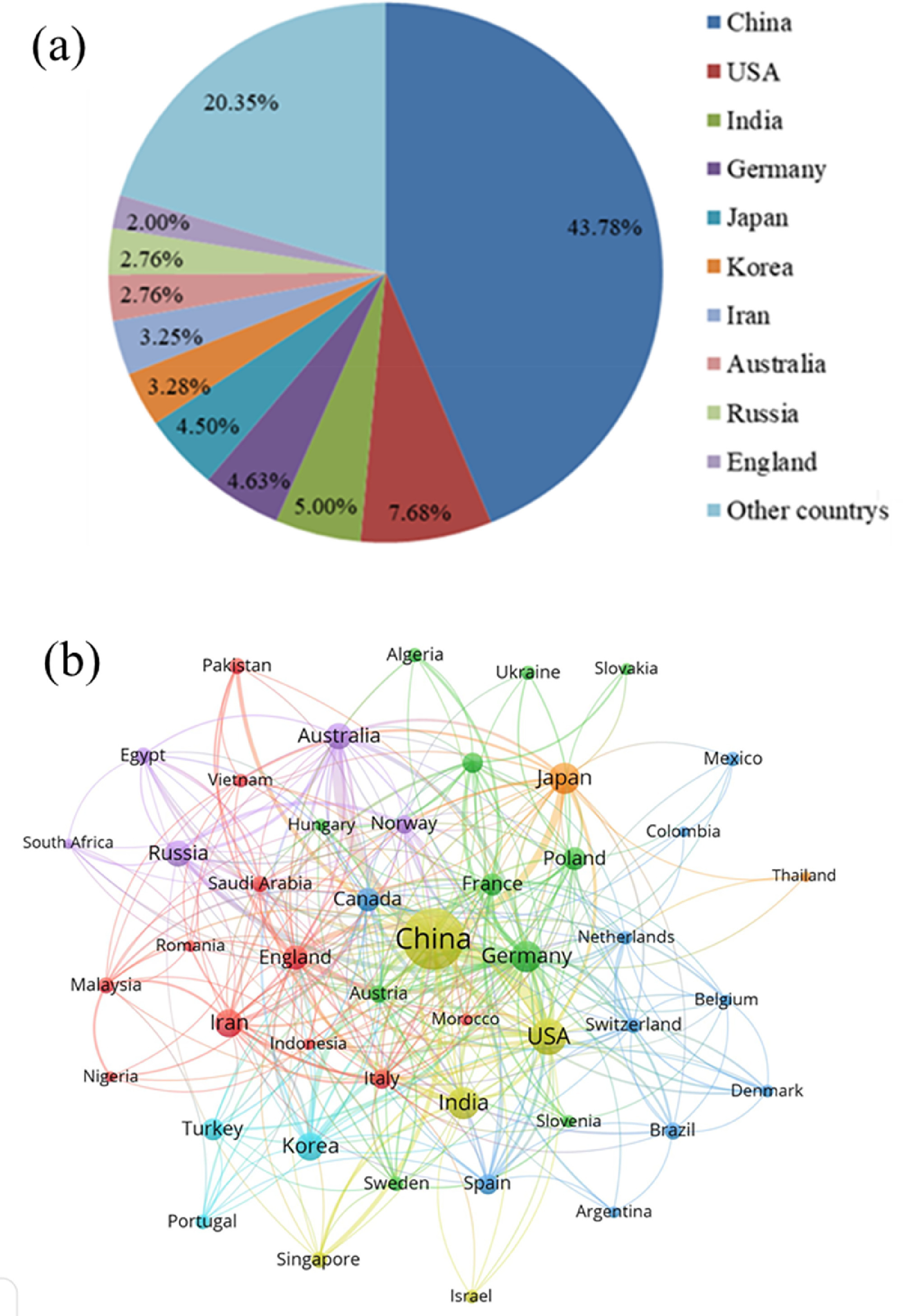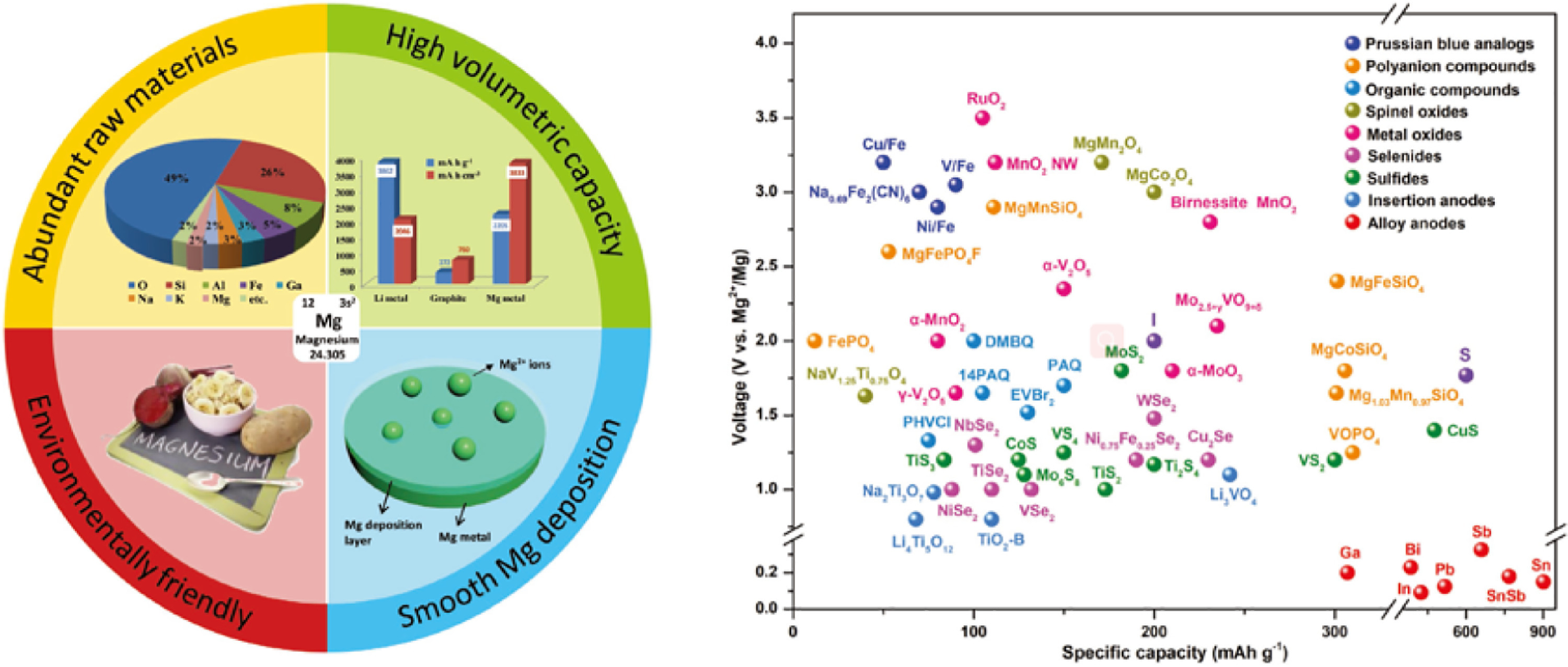 Yan Yang, Xiaoming Xiong, Jing Chen, Xiaodong Peng, Daolun Chen, Fusheng Pan
Yan Yang, Xiaoming Xiong, Jing Chen, Xiaodong Peng, Daolun Chen, Fusheng Pan
 29 August 2021
29 August 2021
This paper reviews the hot spots and future trends of magnesium alloy research in 2020 based on the bibliometric analysis of more than 3000 SCI papers on magnesium and magnesium alloys published in the past year. In 2020, the control of the relationship between microstructure and mechanical properties of magnesium alloys based on the development of new alloys and advanced processing technology is still the main research focus, and the corrosion and protection of magnesium alloys are still widely concerned. Emerging research hotspots mainly involve functional magnesium materials, such as magnesium ion batteries,magnesium hydrogen storage materials, biological magnesium alloys, etc.

Statistical analysis of the distribution of countries with at least 5 Mg papers published in 2020: (a)Paper percentage in different countries (regions); (b) network visualization among different countries
With further development on the control of microstructures of Mg alloys by new alloy design and advanced processing, some remarkable results on the mechanical properties of magnesium alloys were achieved in 2020. For high-strength magnesium alloys,the ultimate tensile strength and yield strength of Mg-8Gd-3Y-0.4Zr alloy viarotary swaging and aging have exceeded 710 MPa and 650 MPa, respectively. The development of RE-free or low-RE high-strength magnesium alloys is more prominent, such as the extruded Mg-1.0Ca-1.0Al-0.2Zn-0.1Mn alloy exhibits an ultimate tensile strength of 425 MPa and an elongation to failure of 11%. High plasticity wrought Mg alloys with an elongation of above 50% were developed in 2020. The elongation of an extruded Mg-0.4Al-1.5Mn is 52.5%, while the elongation of a cold-rolled LZ91 alloy after annealing at 125 °C reaches 56.1%.For high-modulus and high-strength Mg alloys, Mg-Gd-Ag-Mn-Ge alloy with Young's modulus, UTS, and elongation of 51 GPa, 423 MPa and 10%, respectively, were developed.
Functional magnesium materials are becoming an emerging focus and being anticipated to grow significantly in new magnesium materials. A lot of studies on functional magnesium materials were carried out in 2020, including Mg batteries, and hydrogen storage Mg materials, bio-Mg materials, high modulus and high damping Mg alloys, and dissoluble magnesium alloys, etc. In the aspect of Mg batteries,a significant contribution to rechargeable magnesium batteries (RMBs) is achieved by introducing heterogeneous enolization chemistry to overcome the dissociation and diffusion difficulties of electrolyte ions at the electrochemical interface, finally enabling fast and reversible redox processes. By coupling with weakly coordinating boron cluster-based electrolyte, an Mg battery with a specific power of up to 30.4 kW kg−1 and alife-span of 200 cycles can be constructed. A new Mg-1.3Y-0.8Zn-6.4Al-16.7Lialloy with a high Young's modulus of 52.9 GPa and superior damping capacity is developed. A dissoluble Mg97.5Ni1Y1.5 alloys with optimal comprehensive properties, an average corrosion rate of up to 6675 mm/y at 366 K (93 °C) and an ultimate compressive strength (UCS) of 410 MPa was developed in the past year.

The advantages of Mg-ion batteries and the development of Mg alloys as anode materials
The preparation and processing technologies for magnesium alloys were further improved last year. Cast technology for large-scale ingots of high-strength Mg alloys and large-size profile extrusion technology were developed. Some of the new preparation and processing technologies show important prospects, such asrotary swaging extrusion, low temperature extrusion, bimetal casting-co-extrusion process and online heating rolling, etc. The high-quality and large-scale Mg-Gd-Y-Zn-Mn alloy ingots were prepared through semi-continuous casting. The large-size high-strength and tough Mg-9Gd-4Y-1Zn-0.8Mn alloy support beam profile used in rail transport with good surface quality, uniform composition and homogeneous microstructure, and outstanding mechanical properties with an UTS of over 470 MPa, an El of over10% was successfully extruded. The widest thin-walled hollow magnesium alloy profile with a cross-section of 502 mm × 60 mm in the world has been successfully prepared as well.

Schematic representation of the large-strain high-efficiency rolling
Although the research and development on magnesium alloys have been widely conducted, a lot of problems still need to be solved. For the load-bearing structural Mg alloys,the comprehensive properties of magnesium alloys need to be further improved so as to replace more and more steel or aluminum alloys. For example, the ultimate tensile strength and plasticity of ultra-high strength cast magnesium alloys should be increased to more than 400 MPa, 7–10%, respectively. The ultimate tensile strength and the plasticity of ultra-high strength wrought magnesium alloys should be increased to more than 600 MPa and 7–10%, respectively. The elastic modulus of high elastic modulus magnesium alloys should be enhanced to the level close to that of aluminum alloys. The corrosion resistance of high corrosion-resistant magnesium alloys should be improved to meet the application requirements on most occasions. The processing technology for the large-scale Mg parts, the welding and joining technology, the additive manufacturing and the characterization of fatigue properties in Mg alloy parts are also needed to be further developed to meet the demand of wider applications.
Close attention needs to be paid to functional Mg materials such as Mg batteries, hydrogen storage Mg materials, structural-functional materials and bio-magnesium materials. For example, the uncontrolled degradation of magnesium alloys limits its applications in clinical medicine. The surface treatment as an effective method to improve the corrosion resistance and biocompatibility of biomedical magnesium alloys needs to be further developed to achieve the control of degradation of Mg alloys and accelerate the development of Mg implant materials. For Mg battery materials, the most important and urgent tasks for the future development of rechargeable magnesium batteries are to develop suitable electrolytes with characters of wider electrochemical window, higher ionic conductivity, passivation free property and chemical safety, and to uncover the interfacial kinetics between electrode and electrolytes, which can further guide the design of cathode and anode materials as well as electrolyte selection.
